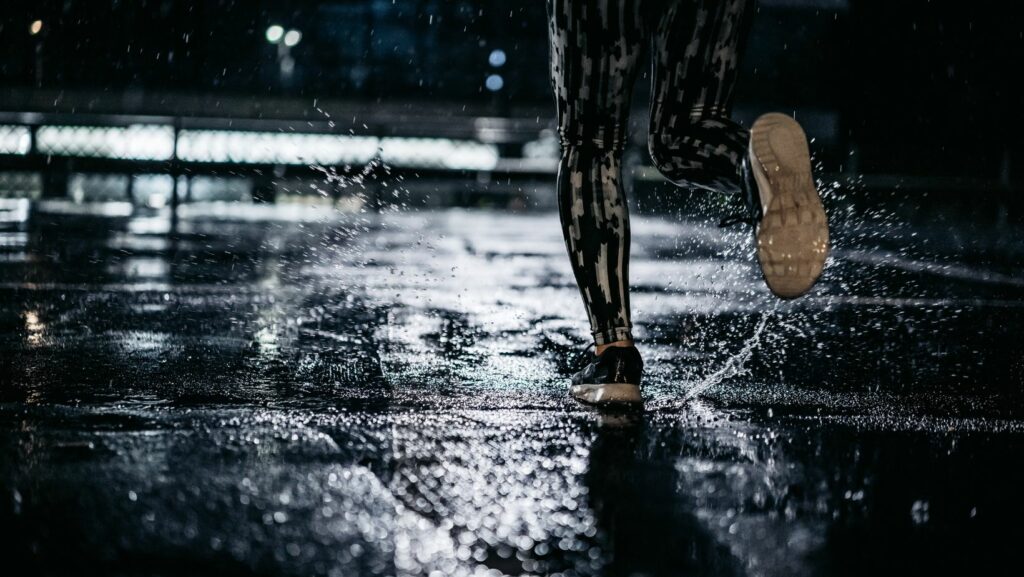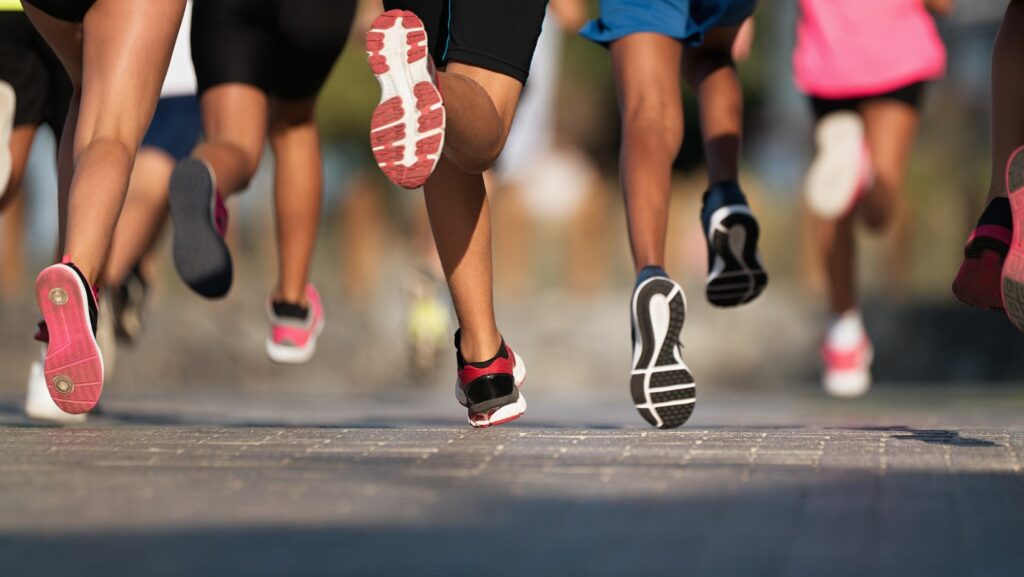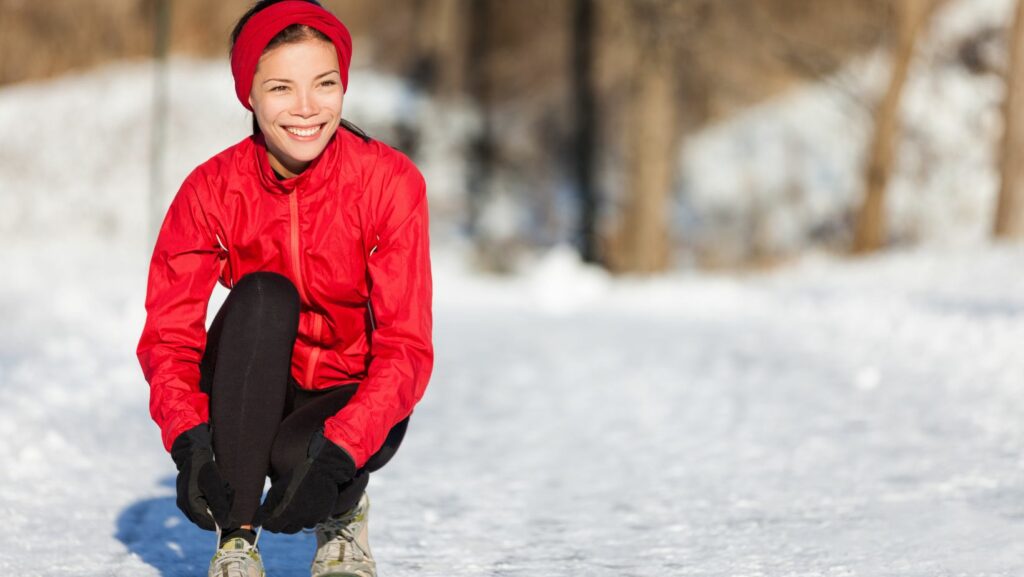Running in the rain can feel like a scene straight out of a romantic movie—minus the charming love interest and the catchy soundtrack. Instead, it’s just you, puddles, and the occasional squishy sock. But fear not! With the right gear, you can turn a dreary downpour into a refreshing adventure that’ll leave you feeling like a superhero instead of a soggy noodle. Choosing what to wear while running in the rain isn’t just about staying dry; it’s about embracing the elements with confidence. From moisture-wicking layers to shoes that can handle a splash or two, the right outfit can make all the difference. So grab your gear, put on your best running face, and let’s dive into the essentials that’ll keep you comfortable and stylish while conquering those rainy miles.
What to Wear Running in the Rain
Selecting the right gear enhances the overall running experience in rainy conditions. Moisture-wicking clothing keeps sweat away from the body, maintaining comfort during each stride. Waterproof jackets shield runners from rain, preventing excessive chilling. Choosing shoes with effective traction reduces slipping hazards on wet surfaces.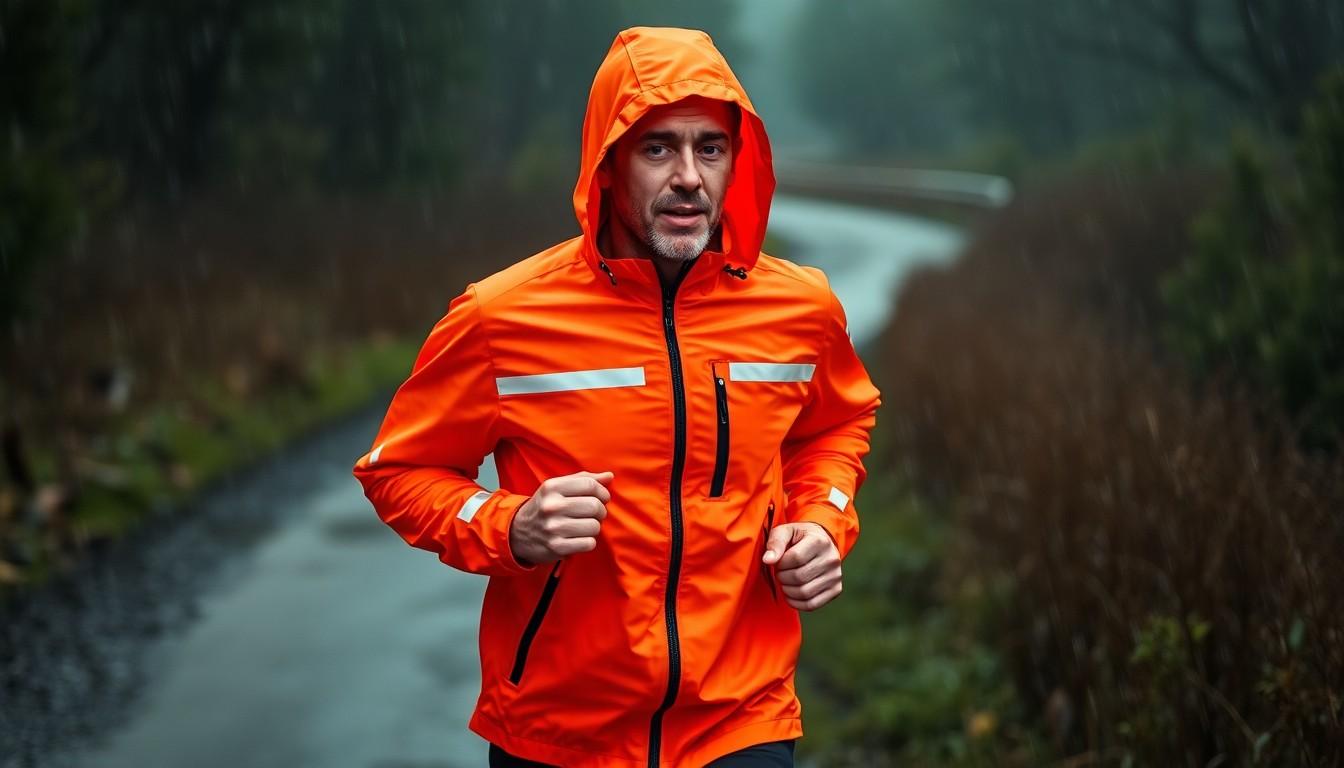 Gaiters can provide additional protection by keeping water out of shoes, ensuring dry feet throughout the run. Lightweight, breathable fabrics prevent overheating while still offering coverage. Accessories such as hats with brims further protect the face and help improve visibility. Layering allows for temperature regulation, retaining warmth when necessary.
Visibility becomes crucial in rainy conditions. Reflective gear significantly increases safety during low-light situations, allowing others to spot runners easily. Gloves add warmth and maintain dexterity for holding items like a phone. Investing in quality gear leads to a more enjoyable and productive run, making it easier to embrace the rain.
Proper gear not only enhances comfort but also boosts confidence. Equipped with the right items, runners can take on the elements more effectively. Preparing adequately for the weather enables consistent training and helps reach fitness goals. Embracing quality gear transforms a rainy run from a challenge into an exhilarating experience.
Gaiters can provide additional protection by keeping water out of shoes, ensuring dry feet throughout the run. Lightweight, breathable fabrics prevent overheating while still offering coverage. Accessories such as hats with brims further protect the face and help improve visibility. Layering allows for temperature regulation, retaining warmth when necessary.
Visibility becomes crucial in rainy conditions. Reflective gear significantly increases safety during low-light situations, allowing others to spot runners easily. Gloves add warmth and maintain dexterity for holding items like a phone. Investing in quality gear leads to a more enjoyable and productive run, making it easier to embrace the rain.
Proper gear not only enhances comfort but also boosts confidence. Equipped with the right items, runners can take on the elements more effectively. Preparing adequately for the weather enables consistent training and helps reach fitness goals. Embracing quality gear transforms a rainy run from a challenge into an exhilarating experience.
Essential Clothing Items
Choosing the right clothing for running in the rain enhances comfort and performance. Below are key items for a successful rainy run.Waterproof Jackets
Waterproof jackets serve as a primary barrier against rain. These jackets should feature breathable materials to prevent overheating. Look for options with adjustable hoods, ensuring protection while maintaining visibility. Effective jackets also contain sealed seams to keep moisture out. When choosing a jacket, consider visibility features, like reflective strips, to promote safety during low-light conditions.Moisture-Wicking Fabrics
Moisture-wicking fabrics play a vital role in rainy runs. Such materials pull sweat away from the skin, keeping runners dry and comfortable. Base layers made of polyester or merino wool provide optimal performance under wet conditions. Choose long-sleeve options for added coverage and warmth. Proper moisture management minimizes chafing, making the run more enjoyable.Lightweight Layers
Lightweight layers offer flexibility and insulation in unpredictable weather. Start with a breathable base layer that maintains comfort during exercise. Adding a lightweight top allows for quick adjustments based on changing temperatures. Versatility in layers means easier packing for spontaneous runs. Runners benefit from easily removable layers that can adapt to varying rain intensity, ensuring a pleasant experience.Footwear Considerations
Choosing the right footwear enhances comfort and safety during rainy runs. Proper running shoes contribute significantly to overall performance.Waterproof Running Shoes
Waterproof running shoes keep feet dry in wet conditions. These shoes often feature breathable membranes to allow moisture escape, preventing discomfort from trapped sweat. Look for models with sealed seams, which help block water intrusion. Brands like Gore-Tex and Everun specialize in waterproof technology, ensuring durability and protection. Selecting shoes designed specifically for rainy weather facilitates a more enjoyable experience while running.Traction and Grip
Effective traction and grip minimize slipping hazards on wet surfaces. Outsoles made from rubber provide excellent grip on slippery terrain. Runners should seek shoes with multidirectional lugs, which enhance traction by improving grip on various surfaces. Additionally, deeper tread patterns further increase traction, providing confidence in each stride. Companies like Salomon and Merrell focus on technologies that elevate grip in rain-soaked conditions. Prioritizing footwear with superior traction becomes essential for maintaining stability while navigating puddles and slippery paths.Accessories for Rainy Runs
Selecting the right accessories can greatly enhance comfort during rainy runs. Proper accessories help maintain warmth and visibility while ensuring an enjoyable experience.Hats and Headbands
Wearing a waterproof hat helps keep rain out of the eyes. Adjustable brims enhance visibility, allowing for better focus on the path ahead. A lightweight headband often absorbs sweat while preventing water from soaking hair. Consider materials like nylon or polyester, as they dry quickly and resist moisture. In addition, reflective elements on hats or headbands improve safety in low-light conditions. Opting for bright colors also aids visibility, making it easier for others to see the runner.Gloves and Arm Sleeves
Opting for moisture-wicking gloves offers warmth without sacrificing dexterity. Waterproof options keep fingers dry, crucial for maintaining grip on equipment. Arm sleeves provide an extra layer of insulation while allowing for temperature regulation. Selecting lightweight, breathable fabrics ensures comfort and minimizes overheating. Look for gloves with touch-screen compatibility, allowing the use of devices without removing them. Including reflective designs enhances visibility, especially during low-light runs when safety is a priority.Tips for Running in the Rain
Running in the rain requires specific considerations for safety and comfort. Implementing effective strategies enhances the experience and promotes safety.Safety Precautions
Visibility plays a crucial role when running in the rain. Wearing reflective gear, like jackets and vests, ensures that drivers and other runners see them clearly. Choosing shoes with excellent traction reduces the risk of slipping on wet surfaces. Gaiters can also prevent mud and water from entering shoes. Planning routes that avoid flooded areas can minimize hazards. Carrying a cellphone allows for quick communication in emergencies. Assessing weather conditions before heading out helps make informed decisions about safety during the run.Maintaining Comfort
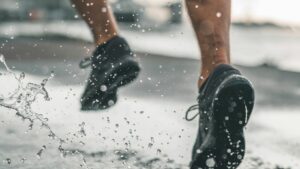 Moisture-wicking clothing enhances comfort by keeping sweat away from the skin. Utilizing lightweight, breathable layers helps regulate body temperature and prevents overheating. Selecting waterproof jackets creates a barrier against rain while allowing ventilation. Gloves protect hands from the cold and improve grip on slippery surfaces. Shoes with breathable membranes maintain dryness and comfort by minimizing trapped moisture. Adding lightweight arm sleeves offers extra warmth and flexibility in changing weather. Hydrating before and after runs remains essential even in cooler, wet environments for overall well-being.
Moisture-wicking clothing enhances comfort by keeping sweat away from the skin. Utilizing lightweight, breathable layers helps regulate body temperature and prevents overheating. Selecting waterproof jackets creates a barrier against rain while allowing ventilation. Gloves protect hands from the cold and improve grip on slippery surfaces. Shoes with breathable membranes maintain dryness and comfort by minimizing trapped moisture. Adding lightweight arm sleeves offers extra warmth and flexibility in changing weather. Hydrating before and after runs remains essential even in cooler, wet environments for overall well-being.

